Painting the ceiling
The cheapest way to update the ceiling in the bathroom is to simply paint it or whitewash it. Painting will not take much time, and will not change the height of the room.
Water-based, latex, acrylic or silicone paint is used as a material. The matte composition hides small irregularities, and the glossy one slightly raises the ceiling visually. Before painting, it is important to level the ceiling with a moisture-resistant putty and sand it, eliminating all defects.
One of the main advantages of paint is that the ceiling can become any color: just add a colorant. An unusual accent will add originality to the room.
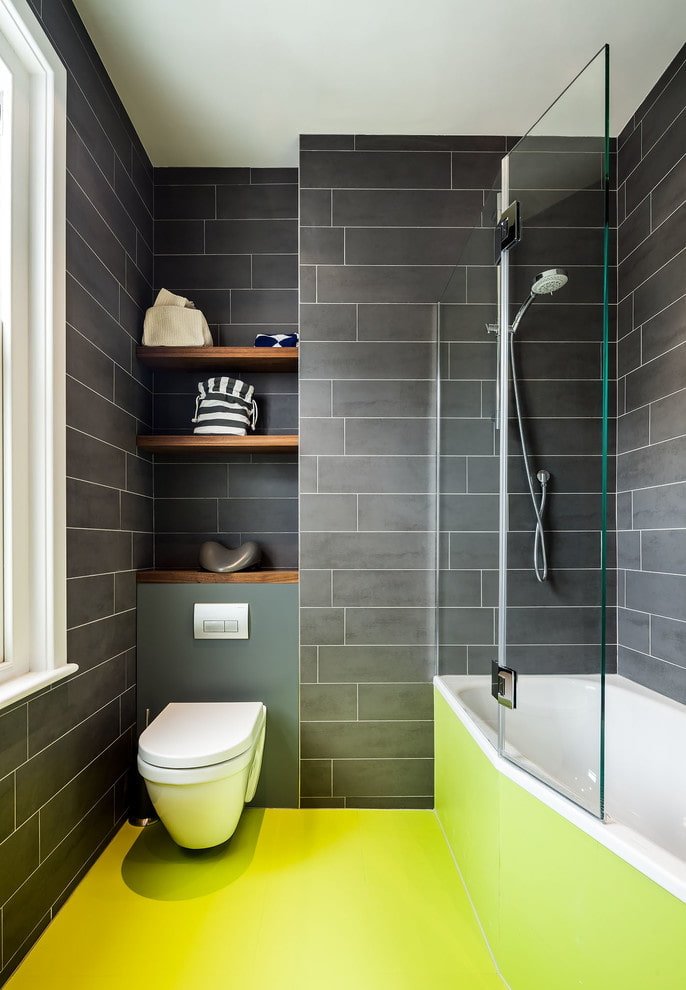
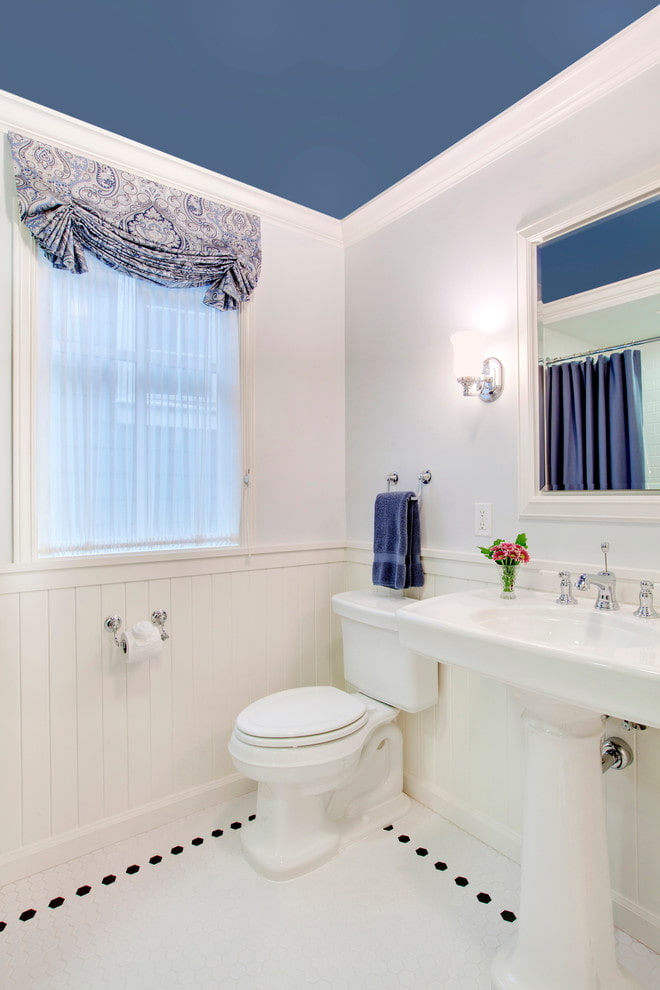
Painting the walls
Some people still associate painting the walls with terrible oil paint, which peels off in whole pieces over time. But modern materials have made great strides in their performance properties, and many designers use paint in their projects.
This is especially important if you want to save money on renovations: the shower area should be tiled, creating a bright accent, and the remaining areas should be painted. The material provides a wide field for creativity, and also allows you to decorate the bathroom in any shade and change its appearance in a couple of days.
Alkyd enamel is suitable for painting, which will lay down as a film and protect the walls from moisture. Another good option is water-dispersion compounds, which are almost odorless. They dry quickly, but are unstable to abrasives and washing with hard brushes.
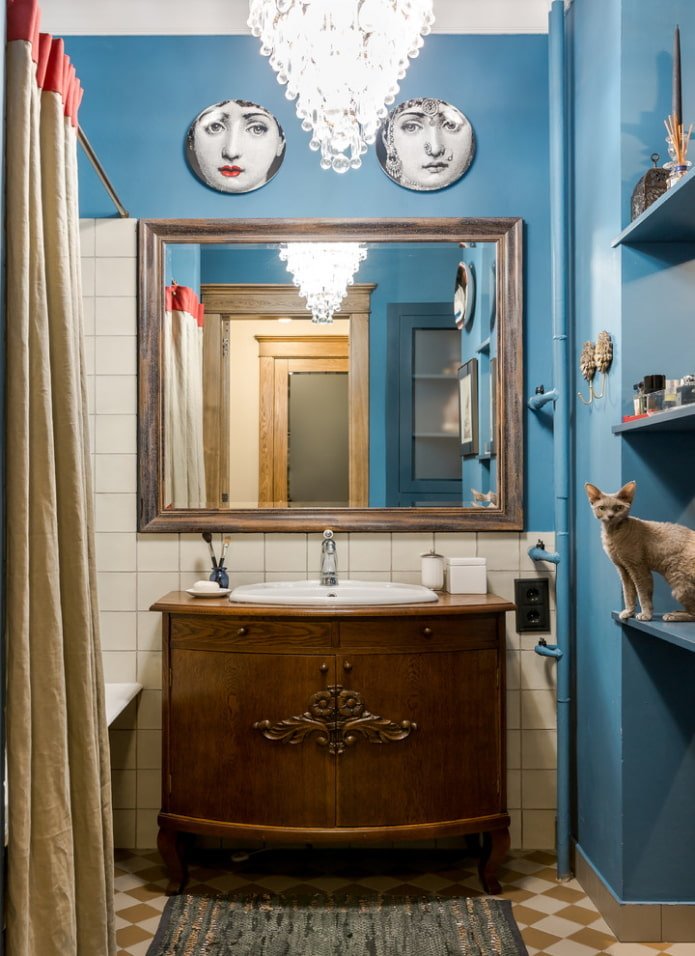
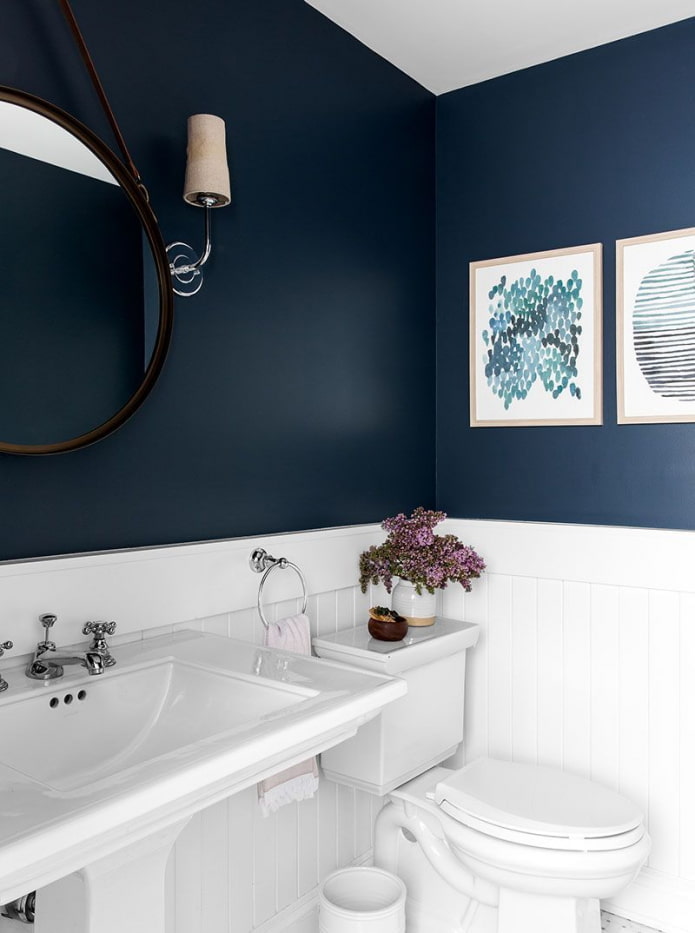
If the tiles in the bathroom hold well, the seams have not sagged, and the elements themselves are not chipped, the surface can simply be painted.
This solution is suitable for those who dream of updating the interior of the bathroom, but do not want to spend time and money on new tiles. At first glance, the idea seems dubious, but practice shows that if the technology is followed, the paint lays well on the tiles and holds up well.
It is important to wash the surface, degrease it and sand it with sandpaper (a sander will do the job faster). Next, it is necessary to apply a primer, for example, Otex. After the primer has completely dried, the tiles are covered with paint for wet rooms in 2-3 layers
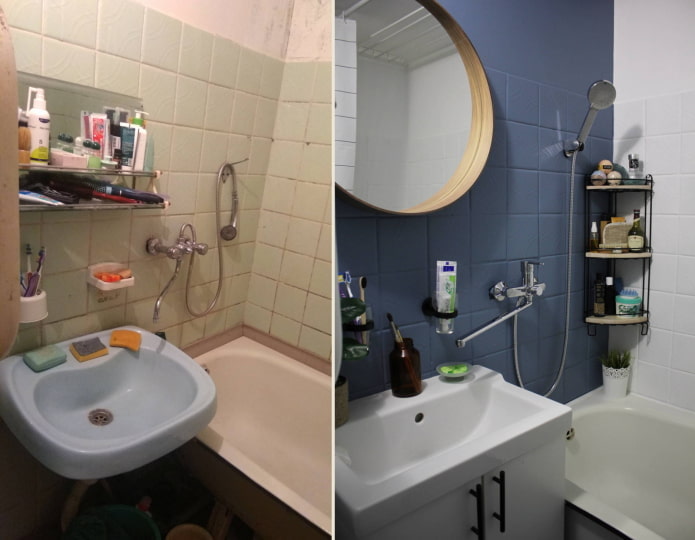
Wall panels instead of tiles
The range of modern panels for decorating a bathroom is so rich that choosing them will not be difficult. The simplest and cheapest option is PVC, while MDF is higher quality and more expensive. PVC panels are long sheets of plastic with internal perforation and an external pattern. They can be matte, glossy, imitate stone, wood, tiles and mosaics, or have a neutral shade.
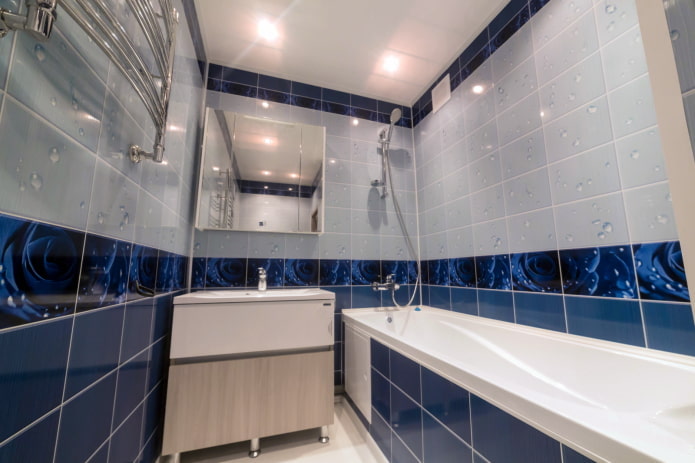
PVC panels are installed without the help of specialists, they are easy to clean. They go well with painting. To install the panels, you need to fix a frame made of wood, metal or plastic to the facing wall, purchase a special fastening solution, primer, sealant and corners.

Wallpaper or self-adhesive
Another way to save your family budget is to use moisture-resistant wallpaper instead of tiles, bypassing wet areas. This material allows you to make the bathroom more “residential” and cozy, is perfect for recreating the classic style, as well as country and contemporary. In any case, beautiful wallpaper will give the room character and surprise guests.
When choosing wallpaper, you should give preference to canvases that are marked with three waves and a brush. The best solution is vinyl, which masks the imperfections of the walls and is easy to clean. By decorating your bathroom with wallpaper, you will save money and time: unlike tiles, they are cheaper, and it takes no more than two days to glue them.
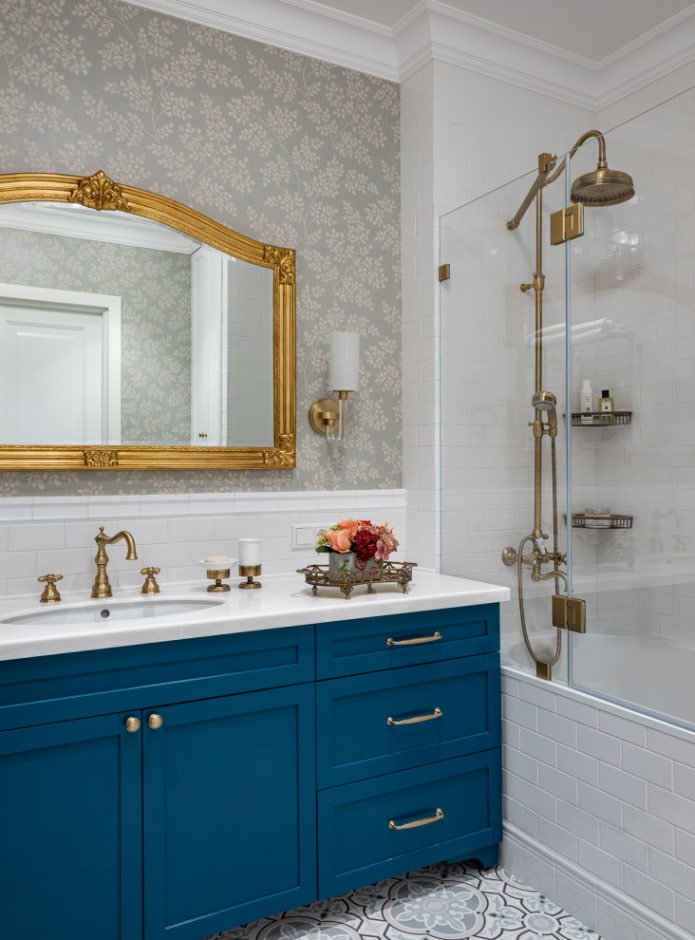
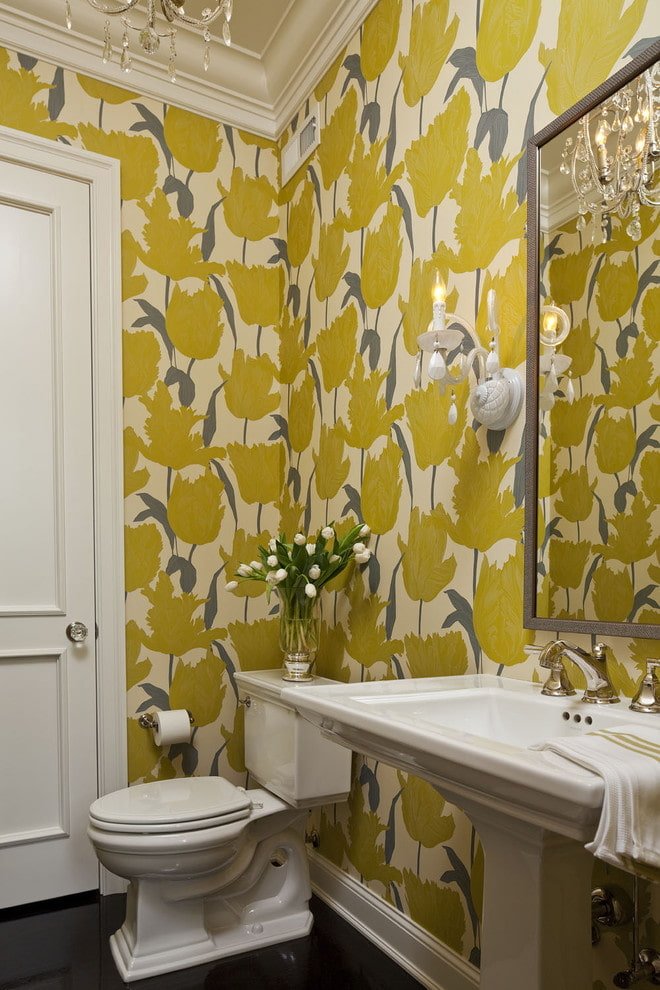
Another option: self-adhesive film. It has a wide range of colors, and its back side already contains glue. The front side consists of a pattern with a polymer coating that protects the material from moisture.
Before pasting the walls, they must be degreased and carefully leveled, since the film does not hide, but often emphasizes defects. Another advantage of self-adhesive film is quick “commissioning”, since you do not need to wait for the glue to dry. The material is easy to care for – just wipe with a damp cloth.
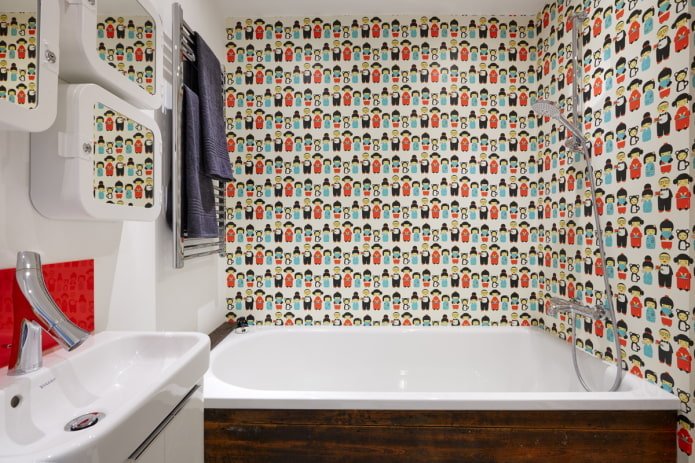
Clapboard
Often used in baths and saunas, where the operational load is much higher than in city bathrooms. When decorating with clapboard, it is important to follow certain conditions:
- Before installation, the walls should be covered with an antifungal agent.
- To secure them to the walls, it is necessary to use a power frame made of a metal profile.
- The slats should be treated with moisture-proof compounds – wax, oil or varnish.
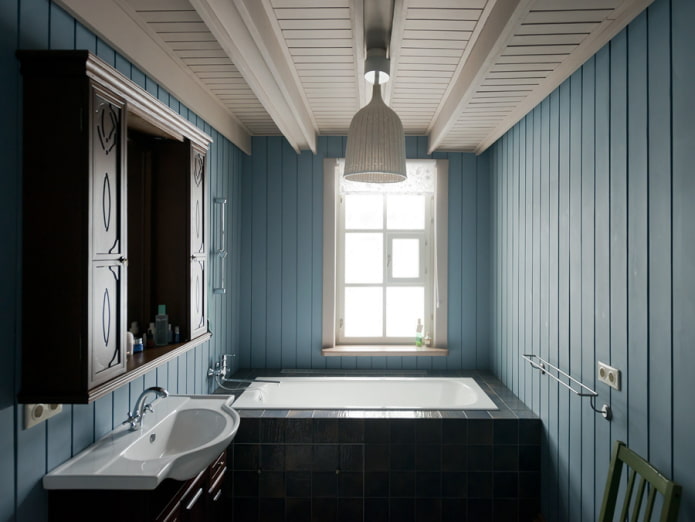
Advantages over tiles: high workability (easier to cut and drill), cost-effectiveness, natural wood grain. Shelves can be attached to the clapboard, but not wall cabinets. For the bathroom, it is better to use budget pine or slightly more expensive larch.
It is advisable to use clapboard to finish both walls and ceilings. It can also be used to close off the bathroom, creating a protective screen.
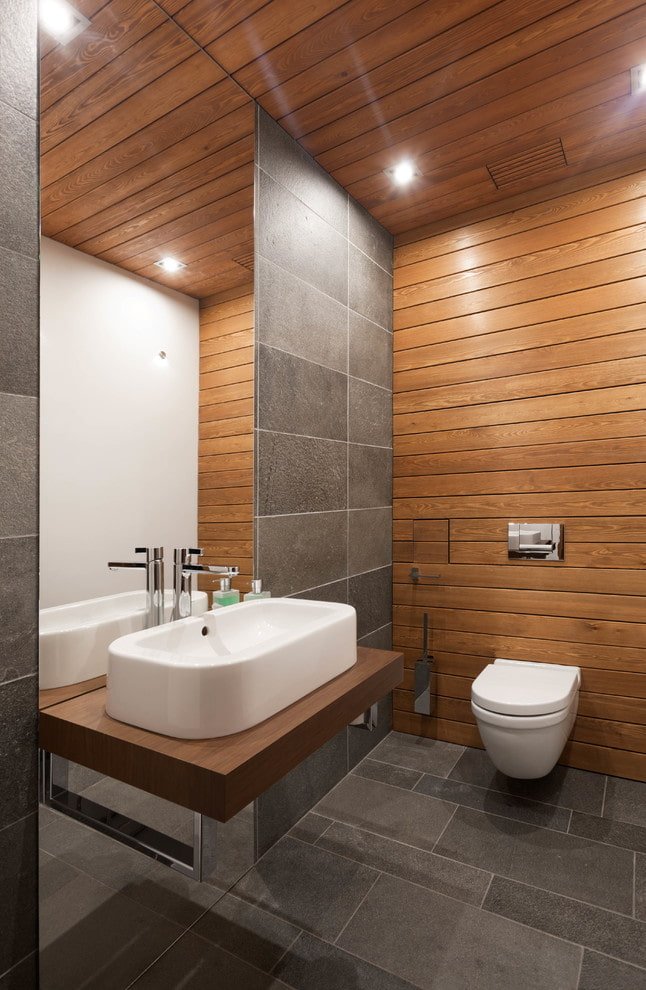
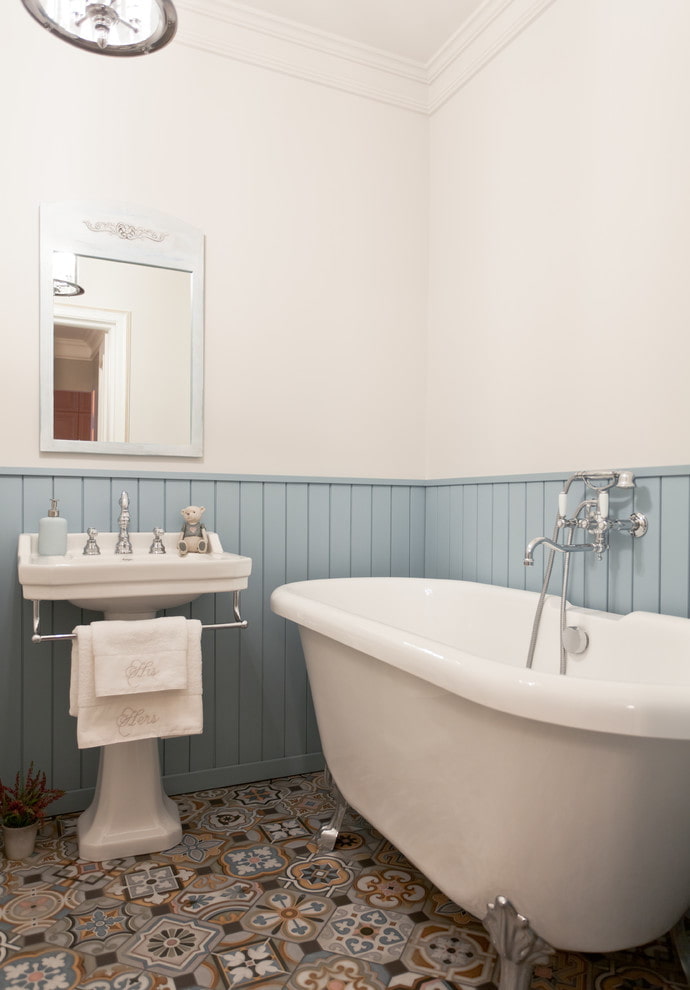
Bathroom without decorative finishing
Exposed brick and concrete have long ceased to be perceived as something rough and cheap: this is a relevant design technique, actively used in loft interiors. Brickwork adds relief to the room, so it looks interesting and attractive.
Gray concrete is a great background for any bright accessories and snow-white plumbing. Such surfaces must be treated with an antiseptic impregnation, and the brick must be covered with a moisture-resistant varnish.
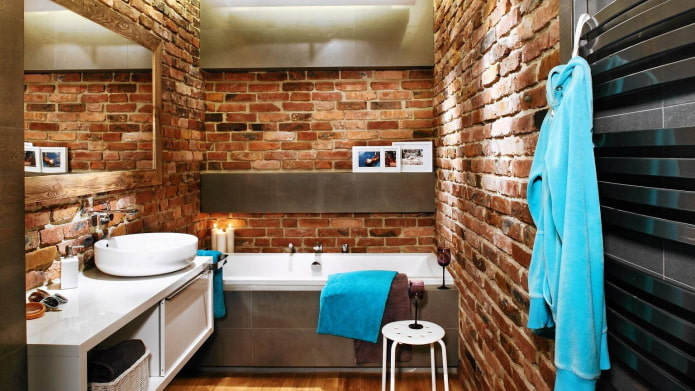
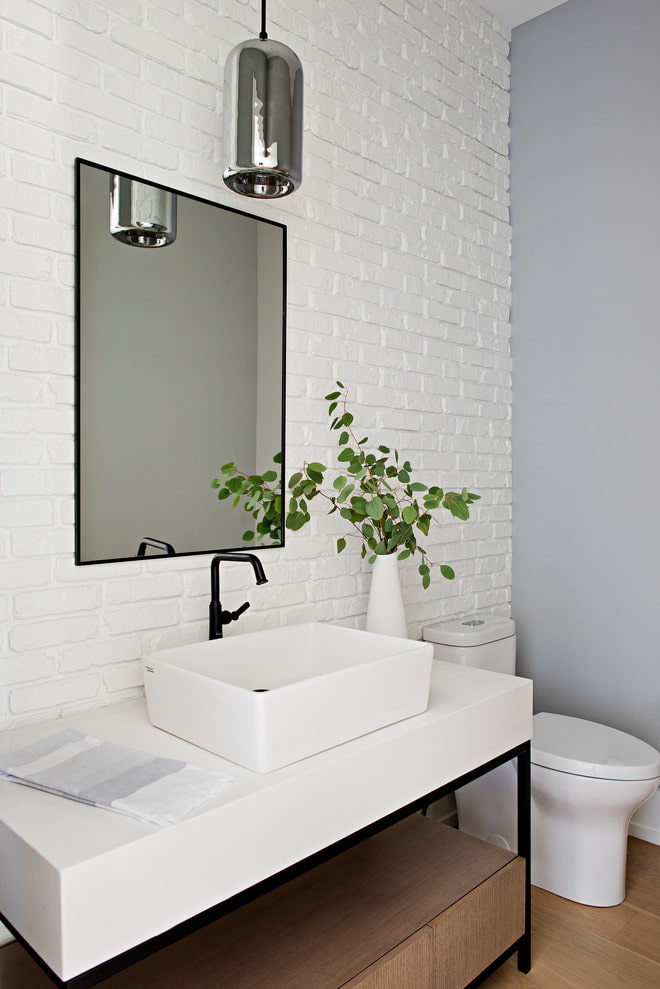

Linoleum for the floor
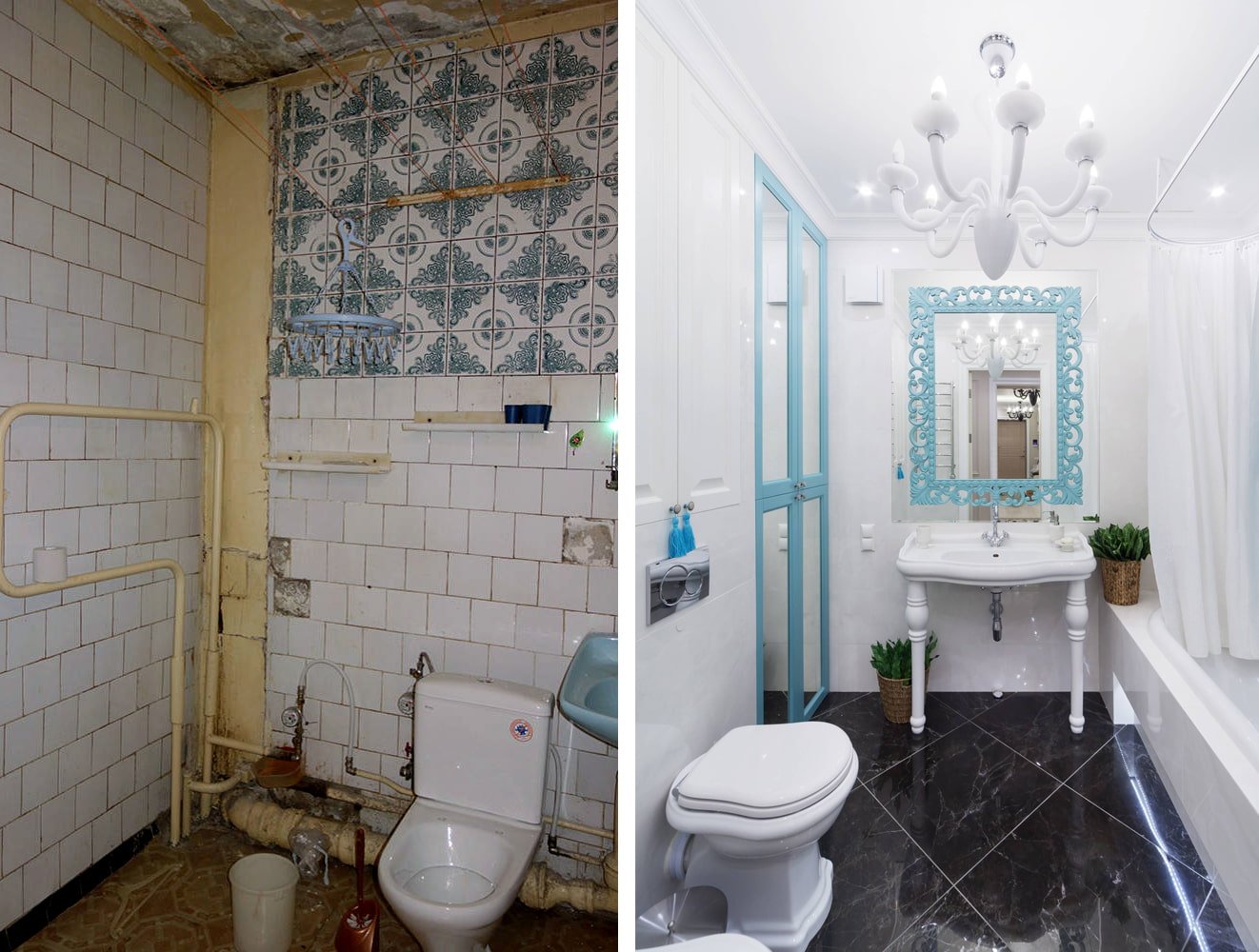
This covering is an alternative to traditional ceramic tiles: it is cheaper, but perfectly protects the floor from moisture. Modern companies produce linoleum that imitates the texture of wood, tiles or stone quite well, so the bathroom will look decent and aesthetically pleasing.
The covering is easy to lay and wash, and its tactile properties are much more pleasant than those of porcelain stoneware.
Another synthetic, but wear-resistant and cost-effective floor covering is polyvinyl chloride tiles. It is also easy to install, does not swell or bubble, and perfectly protects the floor from moisture.
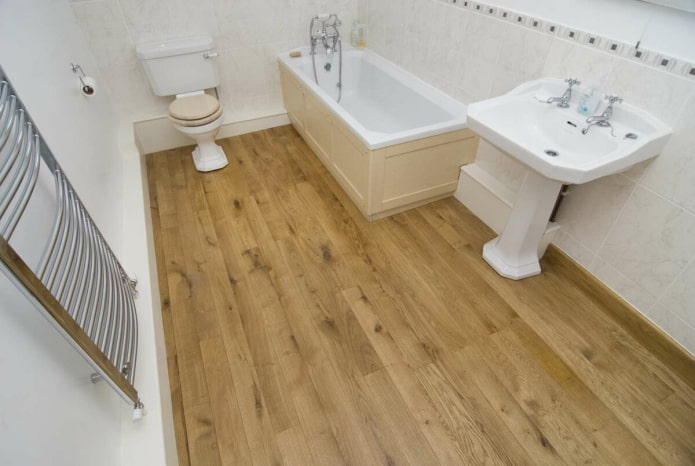
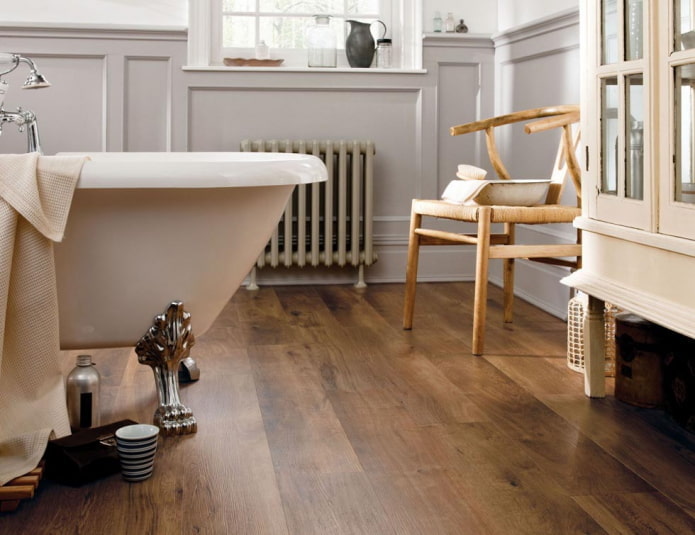
Despite the relatively low cost of the materials used, the bathroom can look stylish and aesthetically pleasing: the main thing is to carefully prepare the surfaces and act extremely carefully.
Now reading:
- tips for visually enlarging a small bathroom when there is no possibility to expand the space
- 12 best unpretentious perennials for your summer house – plant them and forget about worries!
- Your Ultimate Guide to Buying a Dodge Used Car
- 10 creative ideas for decorating curtains with your own hands, adding coziness to the interior.
- Design 42 sq. m: more than 60 photos, layouts of one-room and two-room apartments.